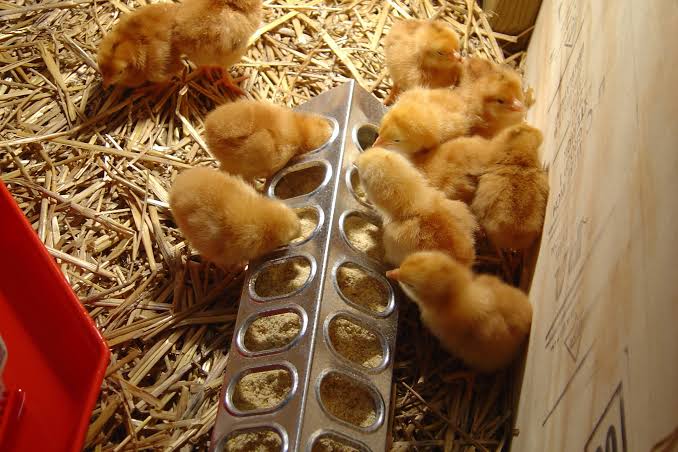Effective chick brooding practices for a healthy and productive flock

Chick brooding is one of the most critical stages in poultry farming. It refers to the early care given to chicks from the moment they hatch until they can regulate their body temperature on their own, usually around four to six weeks of age.
The first few weeks of a chick’s life determine its future productivity and survival rate. Effective chick brooding practices; including optimal temperature control, proper ventilation and meticulous health management can significantly reduce mortality rates and ensure a strong, healthy flock from the start.
Creating the Right Brooding Environment
A successful brooding program starts with a clean, comfortable and secure environment. Before the chicks arrive, the brooder house should be thoroughly cleaned and disinfected to remove disease-causing organisms. Fresh litter, such as wood shavings or rice husks, should be spread evenly on the floor to provide warmth and absorb moisture.
The brooder must be free from drafts and predators, yet well-ventilated to maintain air circulation. Adequate lighting is also essential because chicks rely on light for feeding and movement. A well-prepared brooding area ensures that the chicks adjust easily to their new environment and begin feeding and drinking immediately upon arrival.
Optimal Temperature control
Temperature regulation is one of the most important aspects of chick brooding. Newly hatched chicks cannot regulate their body temperature and depend entirely on external heat sources. The ideal brooding temperature should be 32–35°C (90–95°F) during the first week, gradually decreasing by about 2–3°C each week until it reaches room temperature.
A brooder thermometer or infrared thermometer helps monitor the heat levels accurately. Observing chick behavior is also an excellent indicator of comfort:
If chicks crowd together directly under the heat source, they are cold.
If they move away and pant, they are too hot.
If they spread evenly throughout the brooder, the temperature is just right.
Consistent temperature management prevents chilling, overheating, and stress,all of which can cause high mortality or stunted growth.
Ensuring proper ventilation
Ventilation is often overlooked but is just as crucial as temperature control. Fresh air is necessary to remove moisture, dust and harmful gases such as ammonia from chick droppings. Poor ventilation leads to respiratory issues, reduced feed intake and slow growth.
Good brooder design allows air circulation without causing drafts. Adjustable openings, vents, or fans can help maintain the balance between fresh air and warmth. The goal is to keep the air clean and dry while ensuring that the chicks remain comfortable. Proper ventilation also supports healthy lung development, making the birds stronger and more resistant to diseases.
Feeding and Water management
Nutrition plays a major role in chick survival and growth during brooding. Chicks should have access to clean, fresh water and high-quality chick starter feed within the first few hours after arrival. Water should be at room temperature and placed in shallow drinkers to prevent drowning.
A balanced chick starter feed provides essential nutrients such as protein, vitamins, and minerals required for rapid growth and immunity development. Feeders and drinkers should be cleaned daily to prevent contamination. Proper placement of feed and water ensures all chicks can eat and drink comfortably, promoting uniform growth across the flock.
Meticulous health management
Maintaining chick health requires both prevention and observation. The brooder must remain clean, dry, and free from overcrowding. Wet litter should be removed regularly to prevent coccidiosis and other infections.
Vaccination schedules should be followed strictly according to veterinary advice to protect against common poultry diseases like Newcastle disease and Gumboro. Farmers should also observe chicks daily for signs of weakness, drooping wings, or poor appetite, which could indicate illness. Isolate any sick birds immediately to prevent the spread of infection.
Good biosecurity measures such as restricting visitor access, disinfecting equipment, and wearing clean footwear — further minimize disease risks. A proactive health management routine ensures stronger, disease-resistant chicks that grow into productive layers or broilers.
Monitoring and Record Keeping
Keeping detailed records of temperature, feed consumption, growth rates and mortality helps track the performance of each batch. Monitoring this data allows farmers to identify problems early and make informed management decisions. Regular weighing of chicks helps assess growth uniformity and feed efficiency.
Record keeping is not only a management tool but also a way to evaluate whether current brooding practices are effective or need improvement. Over time, this data contributes to better planning and overall farm profitability.
Reducing Mortality and promoting growth
When temperature, ventilation, feeding, and health management are done correctly, chick mortality rates drop drastically. Healthy chicks grow faster, convert feed efficiently, and achieve better uniformity, which directly translates into higher profits.
Every farmer’s goal should be to maintain a mortality rate below 5% during brooding. Consistency, attention to detail and timely interventions make this achievable. Investing time and effort in proper brooding pays off significantly in the long run through improved flock performance and reduced production costs.
Effective chick brooding is the foundation of a successful poultry enterprise. Healthy chicks today mean profitable poultry tomorrow and that begins with disciplined, well-planned brooding practices.










